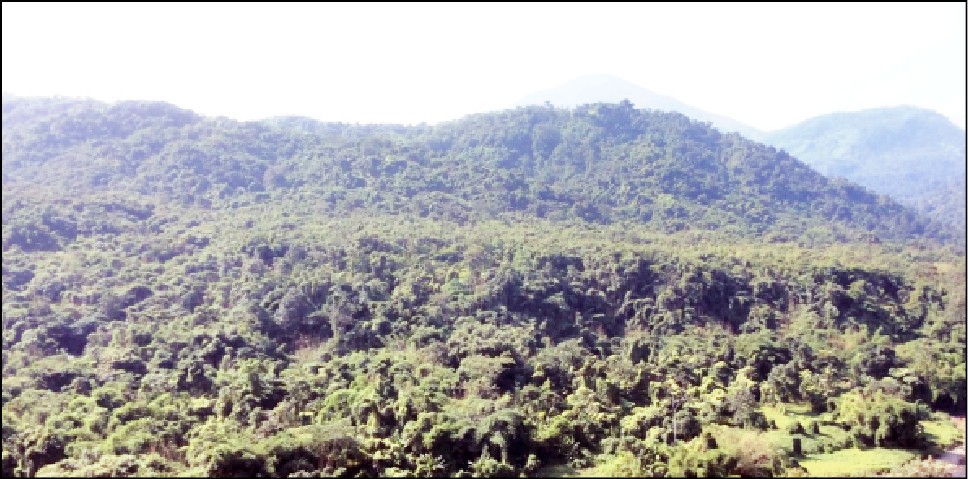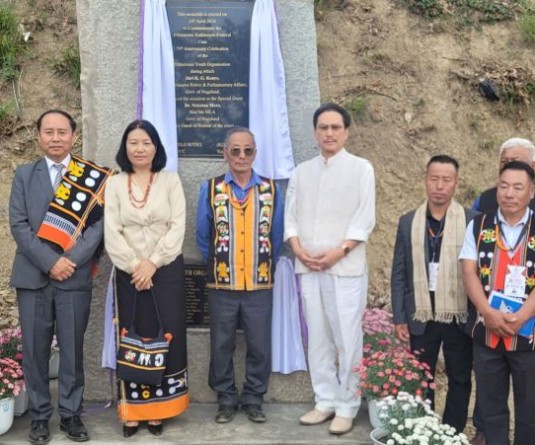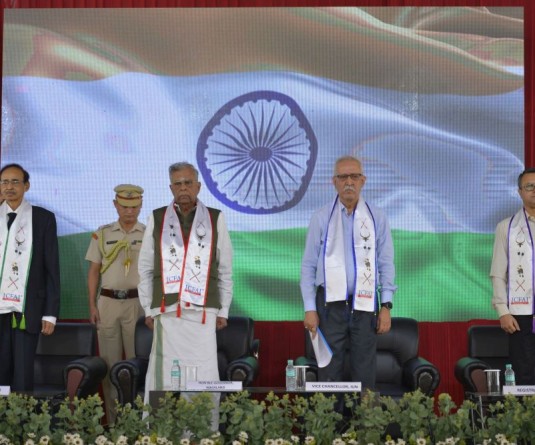A partial view of Yaongyimchen Community Biodiversity Conserved areas. (Morung File Photo)

Our Correspondent
Kohima | January 15
Nagaland has one National Park and three Wildlife Sanctuaries covering 222 Sq.Km which constitutes 1.34% of the state’s geographical area.
“The existence of optimum number of wildlife is an appropriate indicator of good forests and prosperity. The ecological and food security of a country depends on quality and quantity of its forests,” according to the annual administrative report of environment, forest and climate change Nagaland 2017-18.
The report stated that the survival of man is dependent on the survival of animals and plant life.
In the state of Nagaland, where lion’s share of forest resources accounting/measuring 88.3% approximately is under the control of individuals and private communities and the forest department is having very limited regulations and people are hunters since time immemorial, awareness has been created with the sincere efforts of the forest department and feeling of belongingness in the minds of the people of the state is inculcated for forest & wildlife and their protection, the report stated.
The report stated that results are coming forward and wildlife protection by the people of Nagaland is being realized both in our country as well as in the world.
In addition to protection of wildlife in private forests, the department is maintaining wildlife in Intanki National Park, Singphan Wildlife Sanctuary, Puliebadze Wildllife Sanctuary and Fakim Wildlife Sanctuary.
In order to increase Protected Area, the State Government had notified the following Community Reserves under section 36(C) of the Wildlife Protection Act, 1972. Kigwema Community Reserve, D. Khel Kohima Community Reserve, Mezoma Community Reserve, Dihoma Community Reserve, Chishilimi Community Reserve, Khekiye Community Reserve, Lizuto Community Reserve, Atoizu community Reserve, Thsuruhu Community Reserve, Tsekhewelu Community Reserve, Lozaphuhu Community Reserve, Kikruma Community Reserve, Chemekong Community Reserve, Morakjo Community Reserve, Tsiepama Community Reserve, Khrokhropfu Community Reserve, Mopungchuket Community Reserve and Bonchu Community Reserve.
Activities of the Wildlife Wing
Keeping in view of the National Wildlife Action Plan (2002-2016), the Wildlife Sector has taken up some major initiatives programmes limited not only to the PAs and other ex-situ conservation centers but also outside the PAs for protection and conservation of saving critically endangered species and its habitats and initiated specific species/ habitats recovery programmes such as protection and conservation of migratory bird Amur falcon, hoolock gibbon, great Indian hornbill, tragopan bird, protection and management of elephants in the wild and in captivity, etc.
Other programme such as conservation awareness, mitigation human-wildlife conflicts, capacity enhancement activities, eco-development programmes under CSS are [Project Elephant, Integrated Development of Wildlife Habitats, for Protected Areas, Amur Falcons, Human-Animals Conflict, Community Reserves].
Breeding of critically endangered species, housing of captive animals of local, regional and national importance are put at the Nagaland Zoological Park. However, the CSS funding are basically for the habitat manipulation and augmentation of the PA’s resources, i.e., Management of PAs.
The objective of the Wildlife Wing is to provide adequate protection to wildlife in multiple use areas (MUAs) and recognizing that there are several traditional community-initiated and driven conservation programme, and supporting such areas to ensure coverage to the neglected ecosystems and widening the focus of conservation beyond the frontiers of conventional PAs. A recent encouraging trend seen in Nagaland in the field of wildlife management is the realization of the importance of fauna and flora by various communities in the State. Many villages have taken up conservation initiatives in their community land by declaring their areas as Community Reserves, banning hunting, use of explosives and chemicals for fishing and banning of bush fire and destruction of the forests. The Wildlife Wing is encouraging and supporting such initiatives by the Communities.
Another important achievement is – Safe passage of Amur falcon (Falco amurensis): The State Forest Department with the support of NGOs such as Nagaland Wildlife & Biodiversity Conservation Trust, Natural Nagas, Wildlife Trust of India, the Administration and the Villagers (stakeholders) protected the birds from mortality by adopting protection strategies such as deployment of Forest Armed Protection Force (wildlife) at the site who had carried out patrolling round the clock. Besides, the Department had also taken up massive campaign of awareness, education and sensitization from village to village, Church to Church, door to door and school to school.
The report stated that the department also organized marathon race for protection and safe passage of the birds during migration. The Department with the NGOs formed volunteers a “Friends of Amur Falcons” and youth volunteers to assist the Department.
The Forest Department, with the help of the stakeholders has proven the concept of Community-based Wildlife Protection by providing safe passage for Amur falcon thereby Nagaland becomes known as the Falcon Capital of the World and hence Nagaland is declared as safe haven for these migratory birds Amur falcons.
UNEP-CMS and Bombay Natural Forest History Society had appreciated the efforts of Forest Department. And for this achievement, the Forest Armed Protection Force (wildlife) received Governor Commendation Certificate for protection of Amur Falcons.
Challenges and Threats to Wildlife Management
• Habitat Fragmentation due to commercial logging or due to human settlement
• Poaching for bush meat for commercial and personal
• Public apathy
• Carrying capacity
• Bushfire
• Shifting cultivation
• Land holding pattern of the State
• Unscientific/unplanned development activities from Centrally Sponsored Schemes and no resources from the State Government of Nagaland




